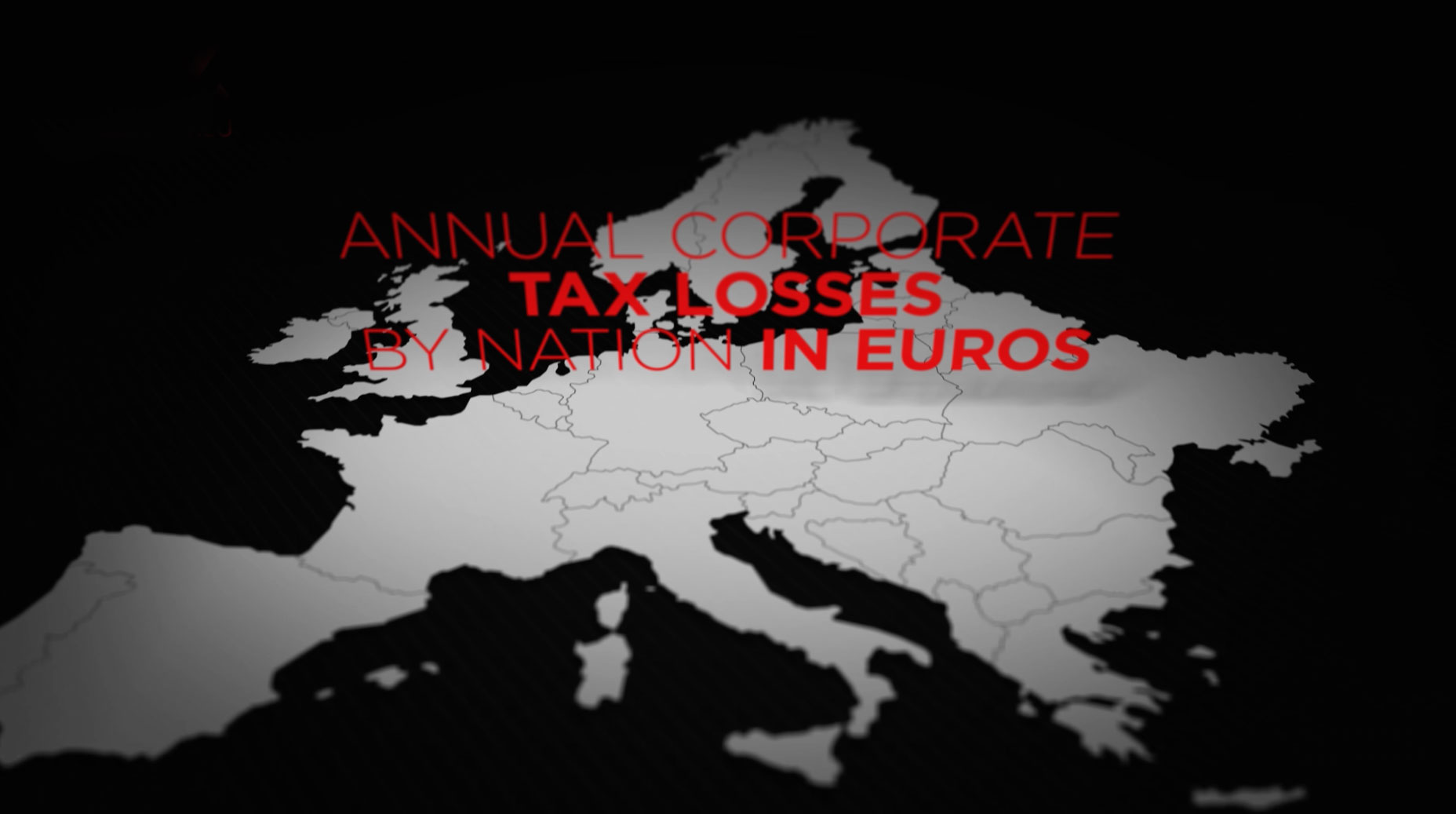Tax Solidarity
How can we make European Union solidary again?
Podcasts
-
Artur Wiza
20 January, 2020 -
Paweł Jabłoński
19 January, 2020
How can we make European Union solidary again?

What if I told you that your money indirectly funds terrrorism, drug trafficking, arms dealing, money laundering and God knows what else…?
Oh, boy… You know what VAT is, right?
VAT stands for Value Added Tax. Everytime you buy something you pay VAT. It can be on a product or a service: a car, bread or a cinema ticket.
VAT is considered the most budget effective and crisis resilient source of revenue. In the EU it represents 26% of all tax revenue.
Great, so in theory. VAT, which you pay on every product and service, is actually possible to cheat. This is what causes the VAT gap, which represents a real loss to the state budget – these losses are in the billions of euros, dollars, pounds sterling or zlotys.
Take your pick.
One of the most effective VAT theft methods is the so called VAT carousel.
Can we do it? Yes, we can. Is it hard? Yes, it is. But it’s certainly worth the effort.
How did they do it in Poland?
Today, Poland is a country with a strong and stable economy.
5% unemployment, 5% annual GDP growth.
And the scale of VAT fraud and theft is below the EU average.
The first step was creating what could be described as an internal Microsoft within the Ministry of Finance. They hired the best tax advisors and experts, lawyers, analysts and programmers. Then came the implementation of Big Data to fight the criminals. Additionally, the Single Audit File was introduced: it collects data from entrepreneurs and sends it to analysts and programmers who construed algorithms to pinpoint potential fraud.
But none of this is unique to Poland.
The breakthrough!
Having already a solid foundation and intellectual background necessary to wage war with VAT carousels, Poland was the first country in Europe, to provide banks with programs which could identify empty invoices and inform the revenue services about them, without compromising the data of honest clients. This, combined with the analytical process turned out to be the most effective way of fighting VAT crime.
Now Poland is a leader as regards minimising the VAT gap, which currently stands below the European average in Poland.

The total value of tax revenue lost by EU countries due to profit shifting by multinational companies, moving the wealth by rich individuals and due to cross-border VAT frauds.
Tax Solidarity
Companies, corporations and high net worth individuals who pay suspiciously low taxes need to be cut off from public procurements.
Companies pay taxes in the country they generate their profits in. That’s the honest way of doing things.
Tax flows between countries are an intricate web of mechanisms and connections, whose main purpose serves to hide the full picture and scale of the schemes not entirely honest companies use to maximise their exorbitant profits.
A key implication of a globalised economy is that establishing fair tax systems is an increasingly international affair.
As Europe improves its commercial cohesion, we suffer terrible losses of public revenue to the tax planning of our continent’s most aggressive international players.
Good work I am British. I am a businessman. I am also an EU Citizen for a few more days and a strong supporter of the EU. I saw your advert banner on the FT website. I agree with the idea of tax solidarity. Europe needs to stand together. The rogues such as Cyprus and the Irish Republic and the Netherlands need to be jolted jack to the common good. American companies like Google/Alphabet and Facebook and Uber etc need to have more tax squeezed out of them to reflect the size and intensity of their penetration into our EU economy. Offshoring wealth needs to be regulated with a common and coherent and robust set of laws. Together, the countries of the EU can stand up to the reality of Trump America and to the mafia state of Tzar Putin and to the emerging power of China and India and to the rising inequalities between corporation and worker and between supplier and consumer. We in the Brexiting UK will be drowned in the Atlantic outside of the EU. So I say, long live a free, humane, fair, vibrant and United Europe. Regulations which protect the collection of taxes for the people are the protections and safeguards of the people. I salute your efforts.
Bob Mills
EUR 170 billion in losses is a large number. So how did we get to these huge losses? The 170 billion is divided as follows: EUR 60 bn is lost due to artificial profit shifting by multinational companies, a further EUR 46 billion due to wealthy individuals shifting wealth and a final 64 billion is lost to cross border VAT frauds. This adds up to a staggering EUR 160 bn in revenue lost by EU countries due to cross-border tax evasion.
Worryingly, some EU Member States, especially the Netherlands, Ireland, Belgium, Luxembourg, Malta and Cyprus - use unfair practices to enhance the artificial shifting of profits of multinational companies. They derive some benefits from the process, but this happens to the detriment of other Member States and the sense of solidarity within the EU community.
The loss of EUR 170 billion is compensated by other taxpayers, which ultimately leads to rising inequalities and a sense of injustice among European citizens.
The EU has been involved in a Tax “race to the bottom”. Basically, EU countries have entered an international tax competition, which has led to a gradual decline in the tax rates imposed on capital, especially corporate profits. Despite being in a union, EU countries have been responsive to each others tax policies: when one government decides to cut tax rates or give special privileges to some taxpayers, another introduces similar actions to maintain tax competitiveness in the global economy. This vicious cycle hits hardest those non-privileged taxpayers who end up taking a growing part of the costs of providing public goods on their shoulders.
Let's put this into numbers: average standard corporate income taxes stood at 34-35% in the period 1995-1999. In the next ten years, it dropped by 10 percentage points, to 24% in 2009. In 2019, the average top corporate income tax rate stood at 22%.
Similarly, the effective corporate tax rate has declined in almost all EU member states since 2000. Between the year 2000 and 2017, the EU average dropped by 8 percentage points, from 24% to 16%.
Multinational companies take advantage of the fact that not all countries force companies to pay taxes where profits are produced. They artificially shift profits to low-tax jurisdictions and reduce their tax liabilities.
This practice of artificial profit sharing has a significant negative impact on public revenue in most EU states. EU Member States lose over EUR 60 billion (at 2016 prices) of tax revenue each year because of it. The worst hit are Germany (EUR 18 billion), France (EUR 11 billion) and the United Kingdom (EUR 14 billion).
EU Member States lose, on average, 13% of their current revenue. This ranges from as high as 20-30% in Germany, Hungary, France and the United Kingdom to around 10% in some Central and Eastern European countries (characterized by relatively low tax burdens on corporations) - Bulgaria, Czechia, Slovakia, Slovenia and Romania.
A fundamental tax principle in an increasingly globalised world ought to be that profits are taxed in the jurisdiction where they are actually produced: however, not all countries abide by this rule, including six EU countries.
These countries are (listed alphabetically): Belgium, Cyprus, Ireland, Luxembourg, Malta and the Netherlands. These EU Member States are beneficiaries of the artificial profit shifting process, which sees multinational companies shifting profits to these low-tax jurisdictions and thus reducing their tax liabilities. Most of the artificial profit shifting in the UE takes place among the EU Member States themselves, with almost 80% of lost corporate income tax due to artificial profit shifting lost to other EU Member States.
This process has a significant negative impact on public revenue in most EU Member States. It also shows that the fundamental tax principle of taxing profits in the jurisdictions they are generated, is largely disrupted in the EU.
FDI is often an important driver for genuine international economic integration, stimulating growth and job creation and boosting productivity through transfers of capital, skills, and technology. FDI is defined as cross-border financial investments between firms, but much of it is phantom in nature. Investments often pass through empty corporate shells, or special purpose entities, which have no real business activities. Their sole purpose is to minimise a multinationals’ global tax bill.
A shocking 40% of all foreign direct investment (FDI) is phantom, and Luxembourg and the Netherlands host nearly half of it between them. Ireland is also within the top ten hosts of phantom FDI. If one were to add Hong Kong SAR, the British Virgin Islands, Bermuda, Singapore, the Cayman Islands and Mauritius, one would account for 85% of the worlds’ phantom investments.
The problem of these phantom FDI investments is that empty corporate shells in tax havens undermine tax collection in advanced, emerging market, and developing economies.
It’s not just corporations which are beneficiaries of tax havens and offshore financial centers. Increased globalisation has made it much easier for individual taxpayers to make and hold investments outside of their countries of residence.
The rich and powerful, according to the estimates of Gabriel Zucman have stashed $8.7 trillion in tax havens. The estimates of James S. Henry put the number at $36 trillion. This money, which generates revenue, assuming different rates of return, costs around $200 billion a year in lost global individual income tax losses.
The estimated value of offshore wealth held by wealthy EU citizens is EUR 1.5 trillion, accounting for almost 10% of the EU GDP (2016 data). The majority of wealth transferred abroad goes untaxed, thus contributing to a significant loss in public revenue in EU Member States. At least 75% of the wealth held in offshore accounts by EU citizens is not reported to tax authorities. Estimates suggest that as much as EUR 1.1 trillion is not subject to taxation, resulting in public revenue losses of EUR 46 billion for EU Member States.
VAT fraud is a severe problem in the EU, with EU Member States losing important parts of public revenue to VAT frauds and inadequate VAT collection systems. Those losses are expressed by the VAT gap - this is the difference between the VAT paid and the theoretical value of VAT revenues should all taxpayers declare their actions and transactions correctly. The losses in public revenue are substantial, amounting to EUR 137 billion lost in 2017. Roughly 40% of that money was lost to cross-border VAT frauds. On average the VAT gap amounted to 12% of the theoretical VAT revenue in EU Member States in 2017.
How does this VAT fraud take place? Organised criminal groups extort tax by using weaknesses of the system for collecting VAT fraud from intra-Community transactions.
In recent years, the VAT gap has declined in most of the EU Member States, but it remains high in several countries, such as Romania, Greece, Lithuania, Italy and Slovenia, where it stands at over 20%. There are however lessons to learn from Poland, which managed to reduce its VAT gap from 27% in 2013 to 14% in 2017 and to barely 9% in 2018.
The Polish success in fighting the VAT gap hinges upon a coordinated effort in adopting modern legislation, consolidating tax administration agencies and initiating their cooperation with the IT and banking sectors.
